
Femmefit Thursday April 20 2017
Femmefit Thursday April 20 2017 – Crossfit 915Crossfit 915
Femmefit Thursday April 20 2017
WOD
in 20 minutes
Total
6-9 12 15-18 21
Package gets
Fat strip
in outstanding period
MAX basketball slams

Femmefit Thursday April 20 2017 – Crossfit 915Crossfit 915
WOD
in 20 minutes
Total
6-9 12 15-18 21
Package gets
Fat strip
in outstanding period
MAX basketball slams
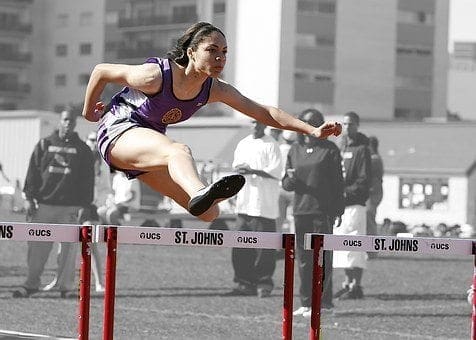
El Paso, TX. Chiropractor Dr. Alex Jimenez discusses student-athletes and injuries.
Most injuries to student-athletes occur during routine practices, but only about a third of public high schools have a full-time trainer, according to the U.S.-based National Athletic Trainers’ Association (NATA).
“It’s important to have the right sports safety protocols in place to ensure the health and welfare of student athletes,” said Larry Cooper, chairman of NATA’s secondary school committee. “By properly preparing for practices and competitions, young athletes can excel on the field and stay off the sidelines with potential injuries.”
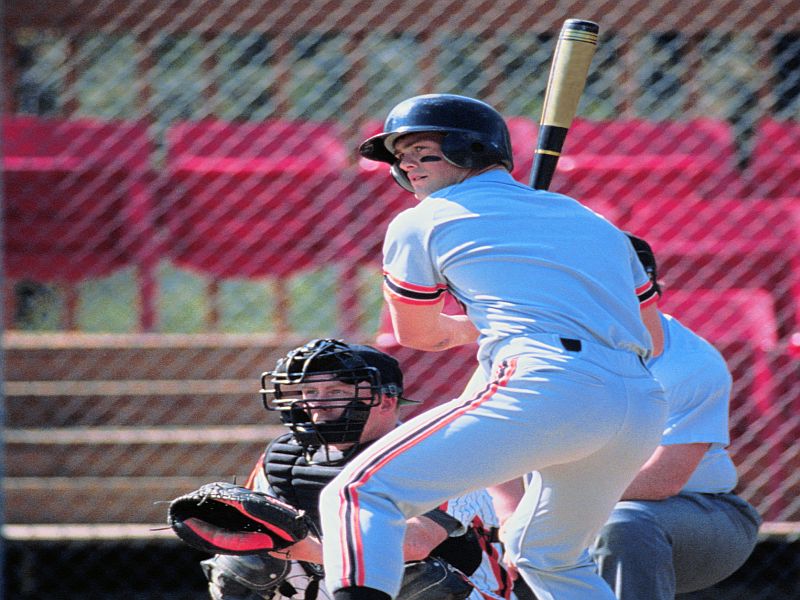
Here’s what to consider:
NATA says parents should also help ensure their teens are both mentally and physically prepared to play sports. This includes a preseason physical to identify any health conditions that could limit their participation. Young athletes shouldn’t be pushed or forced to participate. Parents should make sure their child’s school, coaches and other staff have a copy of his or her medical history as well as a completed emergency medical authorization form.
NATA recommends parents, student-athletes and coaches keep these safety tips in mind when spring training begins:
“It’s critical that all members of a school’s sports medicine team (athletic trainers, physicians and school nurses) work together to help prevent, manage and treat injuries or illnesses should one occur,” Cooper said in a NATA news release. “With a team approach we can reduce acute, chronic or catastrophic injury and ensure a successful season all around.”
News stories are written and provided by HealthDay and do not reflect federal policy, the views of MedlinePlus, the National Library of Medicine, the National Institutes of Health, or the U.S. Department of Health and Human Services.

The UTEP volleyball team announced its tentative 2017 fall schedule. Thirteen home matches, including two home tournaments, will take place in Memorial Gym this fall. UTEP will open the year with 14 non-conference matches, including Texas Tech and New Mexico, before Conference USA play begins September 22.
�There�s a couple teams we saw last year,� head coach Holly Watts said. �We played at North Dakota and we played against Samford and to have them play here at our home court will be nice. They were both tough matches last year, but tough matches that we played well.�
The fall schedule kicks off August 25-26 in a rotating tournament in San Antonio, Texas, when the Miners take on Lafayette, Tulane, and UIW. The Miners will return home on Aug. 30 to take on Big 12�s Texas Tech in Memorial Gym.
The Miners will also host two tournaments in as many weeks, beginning with the Glory Road Invitational, which will bring New Mexico, Youngstown, and North Dakota, Sept. 1-2 and ending with the Borderland Invitational featuring Samford, Delaware State, and Abilene Christian Sept. 8-10.
�It�ll be great to have two tournaments, two weekends back to back right here at home,� Watts said. �It�ll give our fans something to watch early in the season so they�ll be excited to come back and watch more as the season goes on.�
A trip to Portland, Oregon, for the Portland Tournament Sept. 15-16 will round out tournament play for the Miners before the Interstate 10 rivalry match against NM State Sept. 19 in Las Cruses, N.M.
Conference USA play will begin with a two game home stand beginning with a Sept. 22 meeting with Rice and ending with a Sept. 24 match against UAB.
The Miners will then hit the road Oct. 1-8 for three matches against UTSA, Charlotte, and Southern Miss.
�That�s probably our toughest road trip in terms of logistics and getting to those campuses,� Watts said of the October weekend. �I�m glad that�s early in the season as far as the conference play goes, but really, we flip back and forth every weekend except for that stretch of three matches. We don�t have a game on the Friday before that Sunday away so I think its going to work out.�
The team will play host to North Texas Oct. 13 and have a rematch with UTSA at Memorial Gym that Sunday. The Miners will go to Bowling Green, KY, to face WKU, then meet with Rice again in Houston.
LA Tech and Middle Tennessee will battle the Miners Oct. 27 and 29, respectively, at Memorial Gym before the Orange and Blue make a trip to Florida to face FIU and FAU. Conference USA play will end with Marshall on Nov. 8 in Memorial Gym.
The Miners will face New Mexico in a non-conference matchup in Albuquerque before the Conference USA Tournament hosted by WKU beginning Nov. 17.
�We are playing some teams that have been to the NCAA Tournament recently so theres a level of teams that would be good wins,� Watts said. �At the same time, there�s some opportunities to win quite a few matches, so hopefully we�ll take care of business and get some wins.�

FORT MYERS, FL. � The UTEP women�s golf team put the finishing touches on the 2016-17 season by finishing eighth at the Conference USA Championships on Wednesday.
The Miners shot 909 as a team with rounds of 307, 299 and 303. Old Dominion captured the title (289-298-289-876), followed by Middle Tennessee (292-291-301-884), UTSA (298-297-294-889), FIU (305-293-296-894), Southern Miss (300-303-294-897), WKU (305-295-306-906), UAB (296-303-308-907), UTEP, Marshall (304-309-303-916), North Texas (306-306-312-924) and Florida Atlantic (307-307-314-928).
Middle Tennessee�s Jenna Burris was the individual winner with a seven-under-par 209 (67-70-72). She was one of three players to shoot under par for the tournament.
UTEP�s Lily Downs tied for ninth place (75-74-73-222), June Ting tied for 18th place (78-74-73-225), Abbie Anghelescu tied for 42nd place (84-75-77-236), Alisa Rodriguez finished 45th (78-76-83-237) and Sofia Castiello tied for 46th place (76-82-80-238).
Overall it was a much-improved season for the Miners, who won a tournament title (Lady Red Wolf Classic in Jonesboro, Ark.), picked up three runner-up finishes, and five top-five finishes overall.
Downs, Ting and Anghelescu are all slated to return in 2017-18. Downs led the Miners in scoring average (75.1), with Ting second (75.6). Both won tournaments this season, and tied for the team lead with seven top-20 showings.
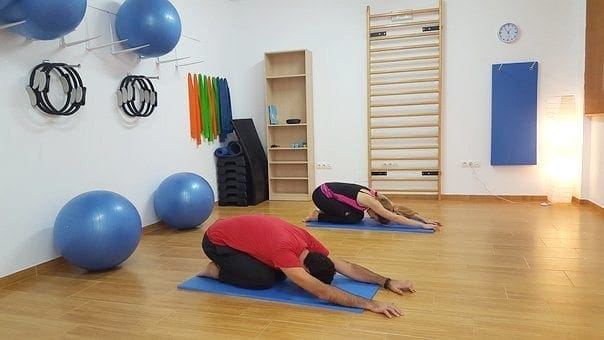
El Paso, TX. Chiropractor Dr. Alex Jimenez looks at yoga for back pain.
Yoga increases strength and flexibility, but some find it to be a spiritual experience that brings serenity and delight.
I attended my first yoga class after I was 21 years old. At the time the goal was purely to appease my self so that I really could tell my family, buddies and coworkers that “I do yoga”. In my experience, yogis were “cool” and I enjoyed being linked with that healthy lifestyle. My twenty-something year old mind was in a self absorbed place and that I totally enjoyed the freedom of dedicating myself to yoga and other enjoyable ways to fill my time.
Yoga in its purest form is intended to help the individual’s head and body and is likely to be practiced without ego.
I loved her gentle encouragement. As I visited my weekly yoga classes, bending and twisting and telling myself “I can perform this,” I began to reap the benefits. I was sleeping better. My body felt less angry and I noticed a calmness come over me. I felt more patient coping with the irritations of life, too.
Yoga is not something you do. It’s a thing that you encounter. Because over time, it gets engrained in you it’s called a practice. The teachings of Maureen were put in me like little seeds which didn’t actually completely thrive until much later in my life. To jogging, though I did not intentionally give up my usual yoga practice, around along the way it took a back seat. Those little seeds were there but lay dormant for now.
I felt free moving swiftly across the road. Being goal oriented, I found monitoring my mileage to be a pleasing achievement. Running was pleasing for another reason, too. My best friend Linda was also a runner, and we’d meet most Sundays for long runs. We’d participated in occasional half marathons and put in 15 to 20 miles each week. Running that distance took time � two hours or even more.
Those small seeds were there all along. Like I mentioned, yoga has a way of becoming engrained in you.
If you’ve been following my site, you understand that I’ve had back pain through most of my entire life. Then, seemingly out of nowhere, my little friend “yoga” softly arrived back on the scene. My pain riddled body seemed to intuitively understand it needed yoga again. I began feeling the requirement to roll over on my back and pull my legs towards my chest, before getting out of bed in the early hours. (The knees-to-chest pose extends your lower back muscles and is a gentle, soothing approach to begin your day.) The reach that was straightforward felt energizing and really good.
There are quite a lot of advantages of yoga, especially for maintaining well-being and managing low back pain. A follow up experiment was conducted after 26 weeks, and those same yoga participants were experiencing increased function and less pain. For me, the continual practice of yoga has relieved my pain to the point that I no more need pain medication to get me.
Thus, let’s get started with a couple of poses which are a cinch to do and great for preserving flexibility in your spine.Try these three poses daily for increased flexibility and your spine will thank you!
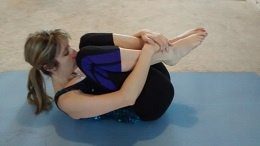
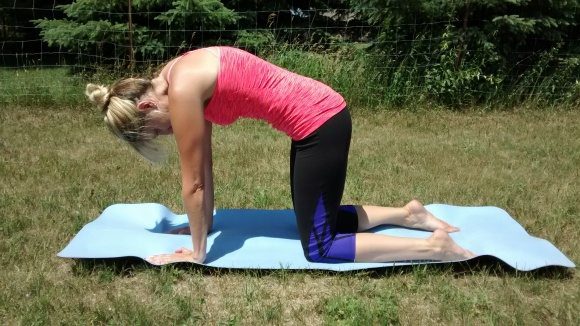
Cat Pose
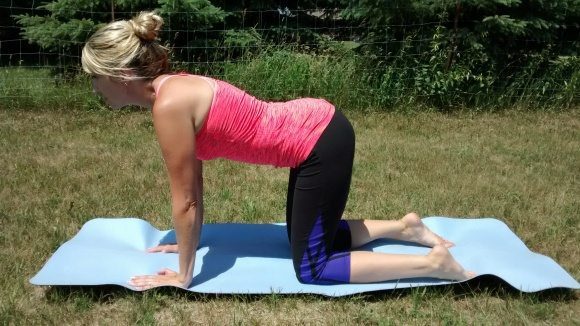
Cow Pose

Those small yoga seeds�put by my first teacher long past � have continued to grow/flourish. I’m a fully certified yoga teacher and revel in sharing my practice with students every week now. May you find peace on your own journey and pain relief too, one pose at a time. Namaste.
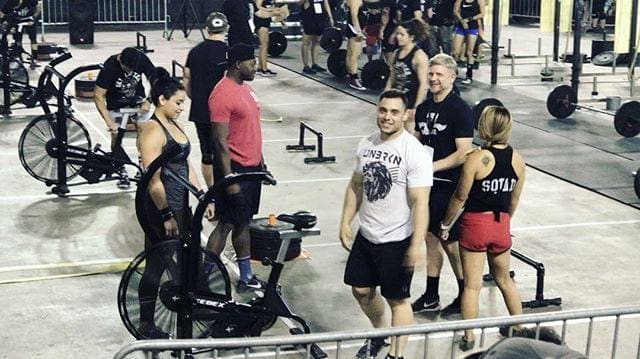
In this cycle we will be working on pull strength, prepping for a better Memorial Day Murph, and extra supplemental strength work to do on your own after or before WOD. You can find this video here.
By the way, �Murph� is a workout that we do every Memorial Day. It is a classic CrossFit workout that just about every CrossFitter has done at one point or another. It is done in memory of Navy Lieutenant Michael Murphy, 29, of Patchogue, N.Y., who was killed in Afghanistan June 28th, 2005. (Yes, the same guy the Lone Survivor Movie featured)
����
Warmup:
3 Rounds:
8 Hip Extensions w/ 3sec pause half way
12 Lunges
16 Jumping Jacks
Strength:
Superset
4 Sets
a) Sumo DL x 2 @ H
b) 5-10 Glute Ham Raise
Skill: kipping Pullups (if time)
MetCon:
�Straight Helen��
1200m Run
63 Kettlebell Swings (Rx:55/35, Sc 44/25)
36 Pullups
Time Cap: 16min
Supplemental Strength:
1) Superset x 4:
DB Bench Press x 8 (heaviest)
One Arm DB Row x 8 (ea arm)
2) Dips- 4�7 (Heaviest)
3) Barbell Curls- 4�8 (heaviest)
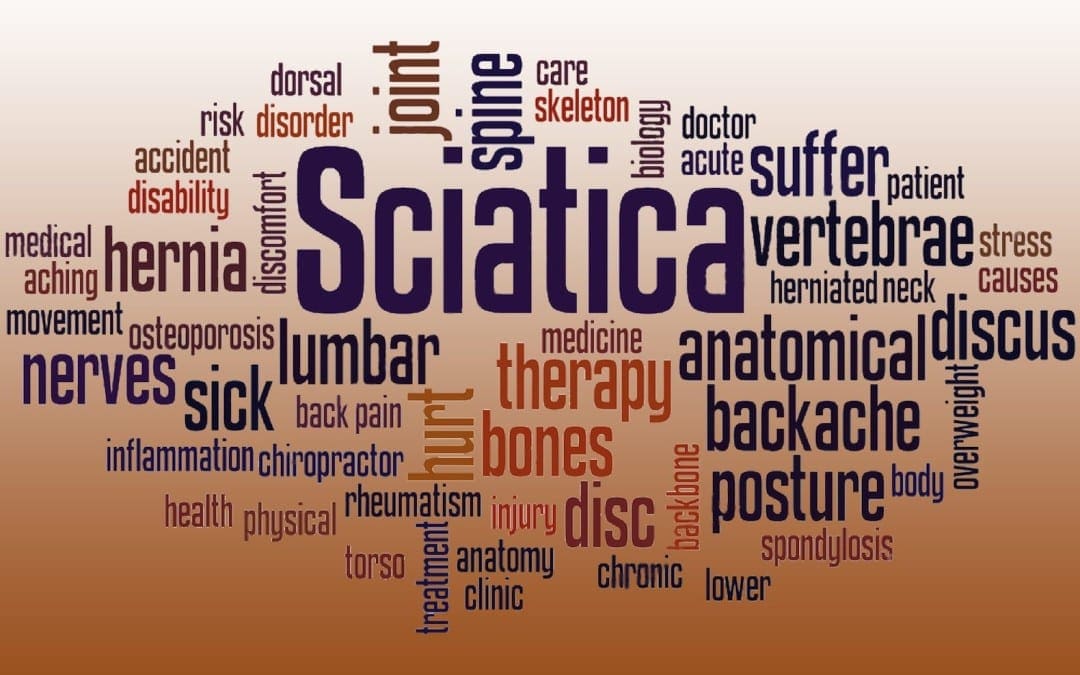
El Paso, TX. Chiropractor Dr. Alex Jimenez takes a look at sciatica.
The pain shoots down your leg�burning, tingling, almost electric. Anyone who�s felt it knows that this is the hallmark symptom of sciatica. But did you know that there�s more to sciatica than just leg pain? And what about the best treatment�should you get plenty of rest or join boot camp? Get the answers with this slideshow. It�s your quick reference for all things sciatica�from what causes it to how to get rid of it.

Sciatica Isn�t A Condition, Disorder or Disease. Though the pain may certainly warrant such a title. Sciatica is actually a group of symptoms. It involves the sciatic nerve, which is the longest and largest nerve in your body. The sciatic nerve is made from several nerve roots in your spine that merge and travel through your buttocks. It then extends down to your knee, where smaller nerves branch out from it and travel to your feet. Sciatica occurs when the sciatic nerve is compressed or aggravated in some way. So what causes that? Read on to learn more.
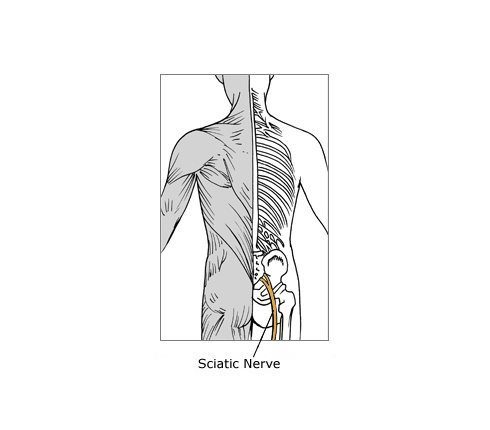
Have You Done A Lot Of Heavy Lifting Lately? Perhaps with poor posture? Heavy lifting can cause a disc in your low back to bulge or herniate, and that can pinch your sciatic nerve. Lumbar herniated discs are the most common cause of sciatica. Herniated discs aren�t caused only by heavy lifting�the effects of aging on your spine can also cause herniated discs.�Though a herniated disc is the most common sciatica cause, it isn�t the only one. Spinal stenosis, injury or trauma, and even pregnancy are other common culprits.
You likely understand the pain of sciatica it can shoot from your low back down your legs, sometimes into your feet. Burning, numbness, and tingling are also common sciatica symptoms. You may find that sitting or walking can become painful chores�and even a cough or sneeze can cause your pain to flare up.
Sciatica affects people in different ways depending on the root cause. Some have pain in their feet, while others have intense pain above the knee. That�s why you should not only pay special attention to what your symptoms are but also where they are. This will help your doctor understand what�s causing your sciatica and, in turn, recommend the best treatment.
In some cases, the only thing you need to reduce your sciatica pain is time and over-the-counter medication. To help reduce inflammation and pain, you�ll want to choose non-steroidal anti-inflammatory drugs (NSAIDs). Advil and Aleve are brand name examples of NSAIDs. You can also try alternating heat and cold packs.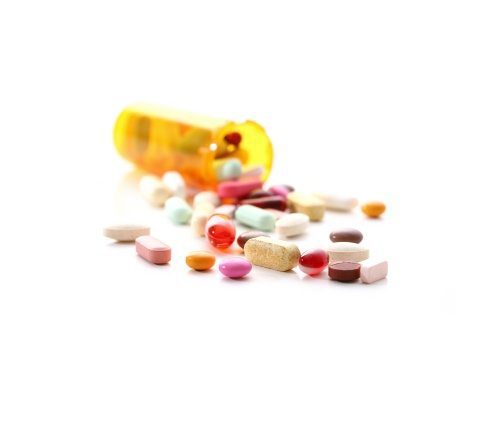
Bed rest might be best for a cold, but it won�t treat your sciatica any faster. In fact, it might slow down the healing process. Most studies support staying active with mild exercise. This doesn�t mean you should spend hours in a gym�that would only aggravate your sciatica. Think gentle stretches and soothing movements. Need a place to start? Watch our sciatica exercise video series.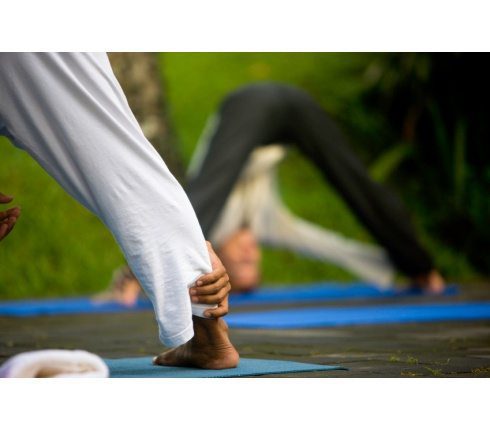
You should talk to your doctor. He or she may recommend prescription medications or epidural steroid injections to reduce pain and inflammation. Or you may want to consult with a chiropractor or physical therapist. These professionals use specific therapies and techniques to reduce your sciatica pain.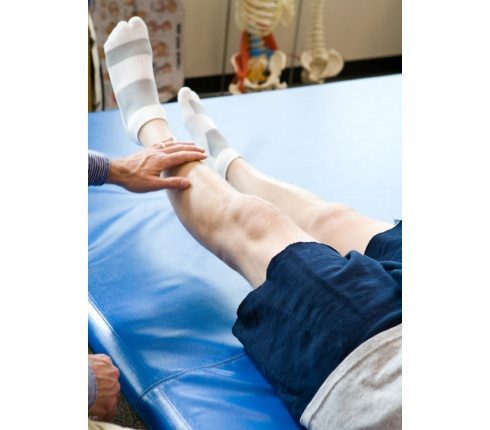
But if your pain just won�t go away�even after using a number of non-surgical treatments�then spine surgery might be the best option for you. Having surgery for sciatica is a big deal, so make sure you gather as much information as possible on your procedure and don�t be afraid to ask your doctor questions.